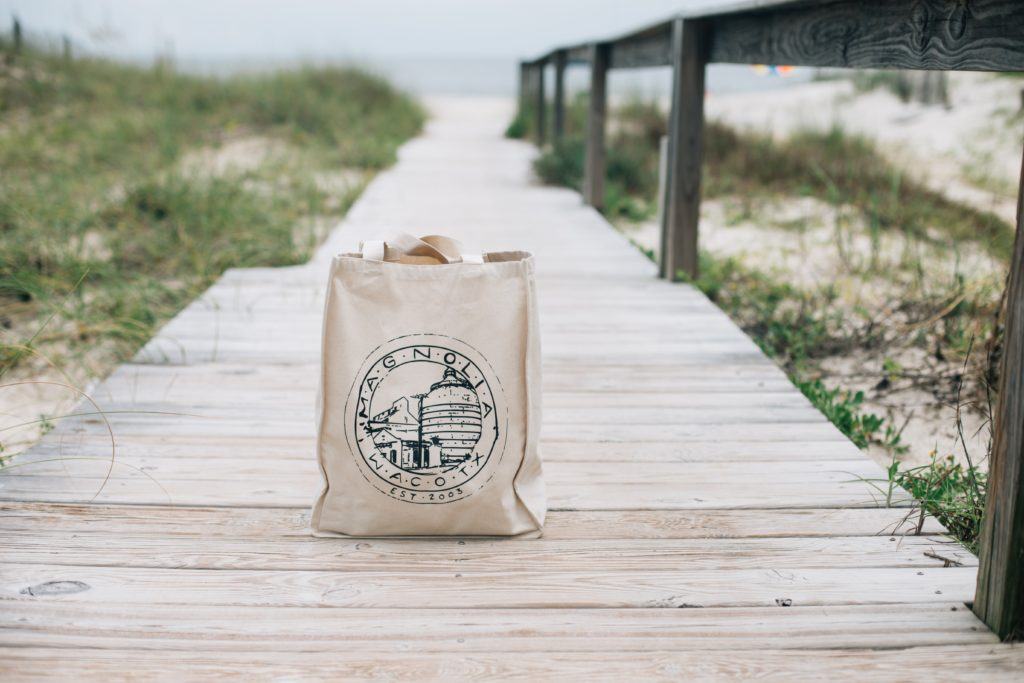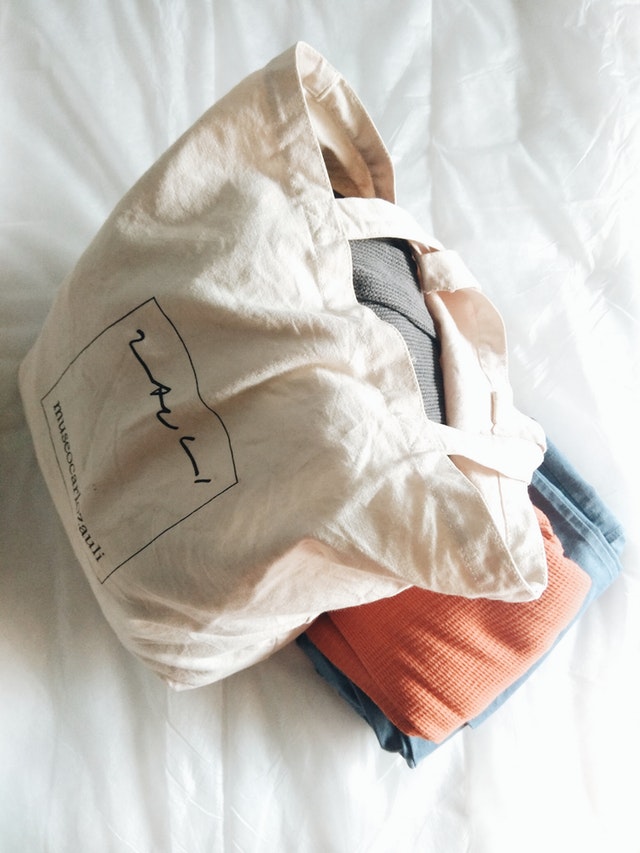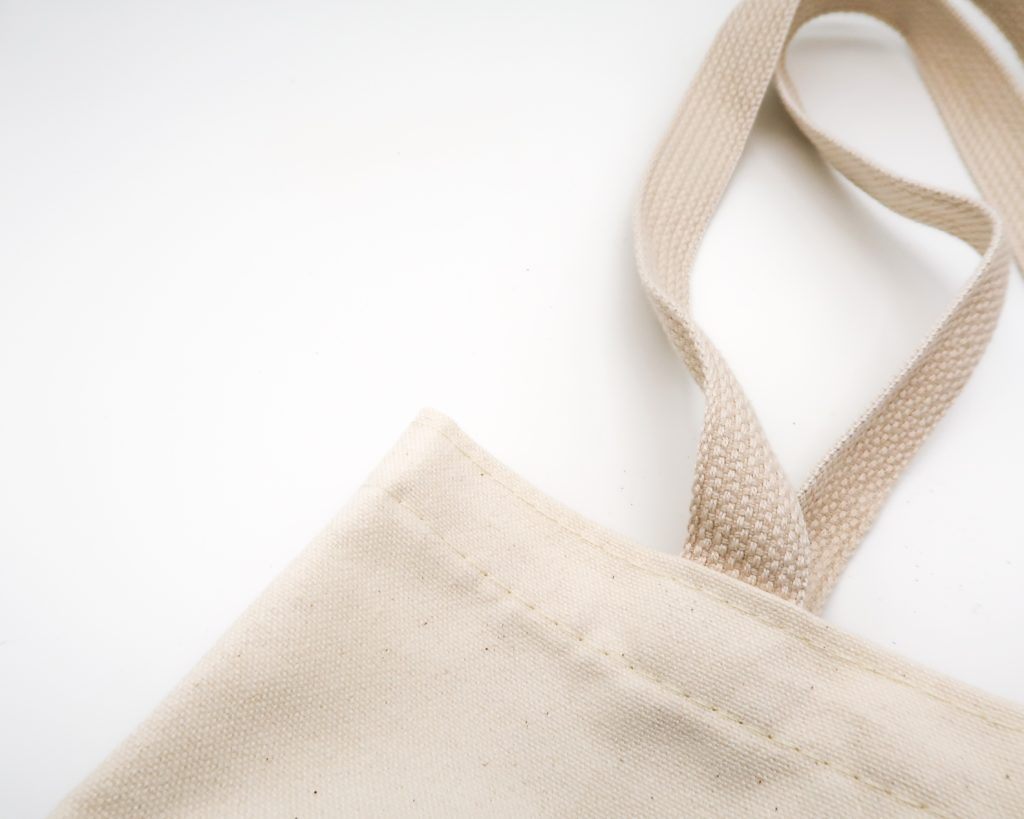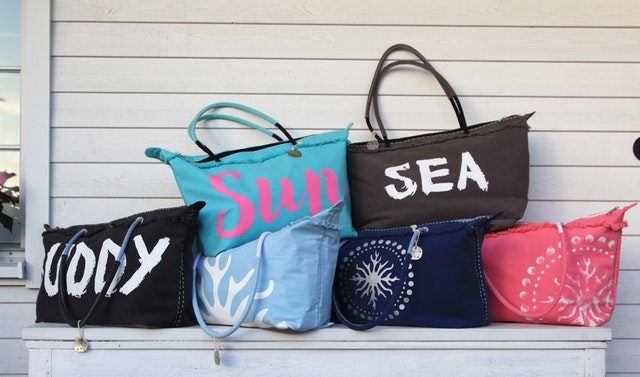When it comes to bags, there are a wide range of types – but nothing beats the simplicity of a tote bag. A tote bag is defined to be a large bag with parallel handles, making them a very versatile design.
Tote bags can be simple, to niche, to even designer! This design is also very popular as an eco-friendly solution to shopping bags, lessening the use of plastic. Other than being eco-friendly, they’re adorable too!

Beyond all this, what’s the best thing about tote bags? They’re so easy to make. Creating your tote bags ensures they’re even more eco-friendly.
As a plus, a DIY tote bag can be crafted from the wildest designs, providing you with one for every occasion!
How do you create a tote bag? In this article, we’ll cover the many different ways you can create a tote bag – from those with a flat bottom, to a zippered tote bag, to those with a lining. Let’s dive in!
What Fabric to Use
What fabric should you use when creating a tote bag? Canvas is a classic tote fabric, but you may have to work with stronger needles.
Of course, you can always pick a thinner material, and use a lining to make your bag sturdier. You can also add interfacing to provide structure in your bag.
When selecting your fabric, feel free to get creative – but be conscious of how much weight it can handle.
How to Make a Tote Bag
There are many different ways to make a tote bag.
The following tutorials on how to make a tote bag focus on one aspect, but you can easily mix and match these patterns to create the perfect design for you!
How to Make a Tote Bag with a Flat Bottom
The flat bottomed tote bag is the go-to pattern for all sewists. It’s a tried and tested design, and it’s super versatile too!
This pattern is an excellent way to get the hang of sewing bags, so it’s perfect for beginners and those just learning how to make a tote bag with lining.
Even though it’s simple to create, it’s very strong, so you’ll have no issue taking it for a casual stroll or on a shopping trip.

Materials
- Bottom fabric, 1/3 yard.
- Top fabric, ½ yard.
- Inner fabric, ½ yard.
- Scissors.
- Thread.
- Sewing machine.
Method
- Let’s begin by cutting our fabric. From your bottom fabric, cut out two pieces measuring 17 by 8 inches. From the top fabric, cut out two pieces measuring 17 by 12 inches. For the straps, cut out two pieces measuring 31 by 4 inches.
- Now, take one top fabric and one bottom fabric and lay them out, right-sides together. Sew one edge.
- Cut out two pieces of inner fabric, according to the size of this new piece.
Sew both of the inner pieces together around the bottom and side edges, right sides facing.
- Now, grab the bottom corner of the bag and turn it so that the material forms a triangle. Then, sew a seam across, about an inch from the tip. Next, snip off the triangle. Do the same thing for all corners.
- Set these aside as we create our straps. Take the fabric pieces and fold them in half lengthwise, right-sides together. Sew it closed, then turn right-side out.
- Now, turn your inner fabric right-side out. Put the inner bag inside the outer bag, and slide the straps between the two. Pin everything in place.
- Sew around the top of the bag, leaving a four-inch gap. Turn the bag inside out through this gap.
- Tuck the inner bag and iron the entire piece. Topstitch around the top of the bag to close the gap.
- And congratulations! You have your new tote bag!
This video shows an example of how to make a tote bag.
How to Make a Quilted Tote Bag
What’s a great way to add pizzaz to your bag, all while using up extra fabric scraps? Why, a quilted tote bag, of course!
If you’re wondering how to make one of those adorable quilted tote bag patterns, you’re in for a treat.
Quilts can be time-consuming, but they aren’t as difficult to create as you’d imagine. What this project lacks in speed, it makes up for with a sturdy design. As a plus, these bags are gorgeous to look at!
Whether you’re experienced with quilting or this is your first project, you can handle this in an afternoon. Let’s dive in!
Materials
- 3 fabric quarters of different patterns.
- Lining fabric, at least 40 inches by 25 inches.
- Thread.
- Sewing machine.
- Scissors.
- Tape measure.
- Pins.
Method

- Begin by cutting up your fabric quarters. If you can, try to coordinate the colors of your quarters so that they go well with each other. Try not to have too many patterns that are overly busy or crowded, and try to vary the colors that are in each pattern. You will need to cut squares five inches long on each side. You will need 27 squares, 9 squares from each fabric pattern.
- When you have your squares prepared, the next step will be stitching them together. You will need to have two sets of 9 squares, three rows by three columns. For the sides, you will need a row of three squares, one for each side. We are going to start with the front of the bag. First, you will need to sew one row of three squares with another row. Then connect them with the third row. Do the same thing for the back of the bag.
- Then, prepare the first side piece by attaching three squares in a row. Create two of these, one for each side.
- When you’re done creating your fabric pieces, iron them flat to prepare for the next step.
- Now it’s time to attach the lining fabric. Layout your lining fabric behind your quilt pieces, measuring out how much you will need to cut. Try to make your measurements as accurate as possible. Remember to keep a ½ inch seam around all sides of the fabric lining.
- This tutorial uses a special type of lining made specifically for quilt projects. This lining is fusible interfacing with a grid guideline so that you can easily line-up your quilt squares and cut accurately. While it can save you a lot of time and effort, this lining is optional, and you can accomplish the same results with any lining. If you’re not using fusible interfacing, pin the good sides of the front quilt piece and lining together, and sew around the whole piece, leaving out a gap so you can turn the fabric inside out later.
Do the same thing with the back, sides, and bottom pieces.
- Now, take the front piece and turn it inside out. Fold the unfinished edges of the quilt and lining towards each other, about a ½ inch from the edge. Then, sew a straight stitch over the edge, keeping a ½ inch seam from the edge. Do the same thing with the other fabric pieces.
- Now it’s time to assemble the bag. Take the front piece and pin a side piece to it, right-sides together. Sew as close to the edge, at about a ¼ inch seam.
- Then, sew on the other side, followed by the bottom. The back piece should be attached, starting from one of the side pieces, and then you can work your way around the whole piece.
- After assembling, turn the bag inside out.
- Add the strap by draping a tape measure over your shoulder. Determine your preferred width and double this number. Fold your straps by half, sew, and turn them inside out. Iron this, and sew them onto your bag.
- Voila! You have your quilted tote bag!
How to Make a Tote Bag with a Zipper
For those who want a more secure tote bag, this pattern has you covered. Zippers are a great addition to any tote bag, ensuring all your items are kept safe and tidy.
Zippers can be daunting for beginners, but with a bit of practice, you can sew them without a hitch! Just be sure to take it slow and double-check your measurements; an uneven line of stitches can cause the zipper to malfunction.

Materials
- 1 ¼ yard of fabric, 60 inches wide.
- 1 yard of lining fabric.
- 1 22-inch purse zipper.
- 60 inches of webbing, 1 to 2 inches wide, for the straps.
- Interfacing (optional).
Method
- Begin by cutting out the pieces that you need. Cut out two pieces of each measurement: 24 x 21 inches for the front and back of the bag, 3 x 24-inch fabrics for the zipper, and 6 x 32 ½-inch fabric pieces for the sides and bottom.
- For the lining, cut two fabric pieces of each measurement: 3 x 24 inches for the zipper, 18 x 24 inches for the front and back, and 6 x 30 ½ inches for the sides and bottom.
- We will start sewing the zipper section. First, place the zipper right-side down on the 24-inch edge of the 3 x 24 inches. Sew the zipper to the fabric with a ¼-inch seam allowance; do the same for the other 3 x 24-inch fabric.
- Add the lining by placing the zipper between the outer and lining fabric. Sew with a ¼ inch seam, and do the same for the other fabric piece.
- Press the zipper tape and the layers of fabric away from the zipper. Topstitch the edge of the pressed edge to hold it in place, and baste the edges together.
- Set this piece aside, and take one set of the 6 x 32 ½ inch pieces. With the wrong-sides together, sew them with a ½ seam. Finish the seam, and topstitch the seam to the body of the fabric.
- Right-sides together, match the seams of the side and bottom pieces to the center of the bottom. Pin it in place. Clip the pieces at the corners, and align the edges against the top edge; pin it in place.
- Attach the bottom and side piece to the front and back with a ½ seam allowance. Do the same thing for the other piece.
- Now match the seams of the top piece with the corners of the zipper piece. Sew them together with a ½ seam allowance. When you need to turn corners, clip corners to create space.
- Now it’s time to add the bag lining. Assemble the lining the same way you attached the side and bottom pieces to the front and back. This will be the same shape as your bag. Place the lining inside the bag, wrong sides together. Match the seams and pin to hold in place. Then, baste the top edges of the two fabrics together.
- Now it’s time to attach the straps! Measure 5 inches from the side seams on the front and back of the bag. Pin the straps in place, and sew the straps with a ½ seam allowance. Sew it multiple times to strengthen the straps.
- Now open the zipper. Pull out the bag through this opening. Align the seams, and reattach the top fabric.
- Fold the right-sides out, folding the top of the bag against the seam. Press the fabric so that the seam line becomes the top edge of the bag. Topstitch the top edge with a ½-inch seam allowance.
Other Patterns
There are many more tote bag patterns. For example, why not try this reversible tote bag from Skip to My Lou?
If you’re wondering how many other ways you can create a tote bag, check out this list from DIY n Crafts for more free tote bag patterns.
Conclusion
Tote bags are versatile; once you have the hang of these basic patterns, you can easily create your own! The cute, eco-friendly bags make great projects for beginners. Just gather your fabric and get crafty!
What are your favorite free tote bag patterns?
